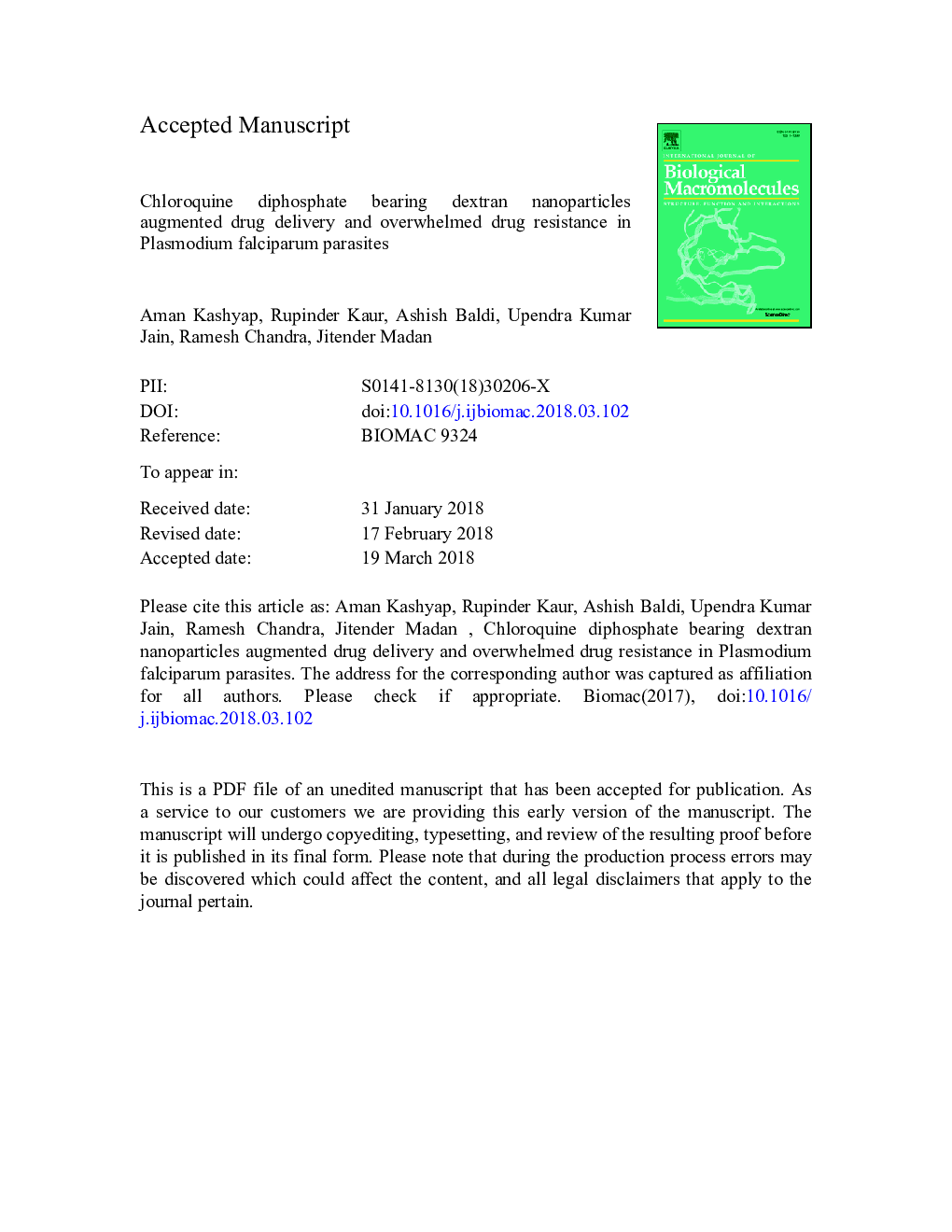| Article ID | Journal | Published Year | Pages | File Type |
|---|---|---|---|---|
| 8327193 | International Journal of Biological Macromolecules | 2018 | 31 Pages |
Abstract
Chloroquine diphosphate (CHQ) is primarily used for the treatment of Plasmodium falciparum malaria at the dose of 500 mg orally or 10 mg/kg parenterally. However, point mutations in Plasmodiumfalciparum chloroquine resistance transporter (PfCRT) protein and Plasmodium falciparum multidrug resistance protein 1 (Pfmdr1) localized in digestive vacuole membrane, are responsible for CHQ resistance. Therefore, in present investigation, dextran nanoparticles bearing chloroquine diphosphate (CHQ-DEX-NPs) were formulated by solvent diffusion method of size below 70 nm with zeta-potential of â20.1 ± 3.2 mV. FT-IR, DSC and PXRD techniques confirmed the successful loading of drug in nanomatrix system with amorphous attributes. In vitro drug release analysis indicated the Higuchi pattern with diffusion controlled drug release. The IC50 of CHQ-DEX-NPs in sensitive (3D7) and resistant (RKL9) Plasmodium falciparum strains was estimated to be 0.031-μg/ml and 0.13-μg/ml significantly lower than 0.059-μg/ml and 0.36-μg/ml of CHQ. The augmented therapeutic efficacy of CHQ-DEX-NPs may be credited to deposition of tailored nanoparticles in food vacuoles of malaria parasites owing to the affinity of parasite towards DEX that consequently lower the drug resistance and improved the therapeutic index. In conclusion, CHQ-DEX-NPs must be evaluated under a set of stringent in vivo parameters to establish its therapeutic efficacy in preclinical model.
Related Topics
Life Sciences
Biochemistry, Genetics and Molecular Biology
Biochemistry
Authors
Aman Kashyap, Rupinder Kaur, Ashish Baldi, Upendra Kumar Jain, Ramesh Chandra, Jitender Madan,
